
Understanding the impact of misinformation on adolescents www.nature.com/articles/s41...
Adolescents = changes that "can increase vulnerability to misinformation through social influence, emotional manipulation and cognitive biases..."
@msultan.bsky.social
PhD researcher at the Max Planck Institute (ARC) studying misinformation, decision-making, and social media.

Understanding the impact of misinformation on adolescents www.nature.com/articles/s41...
Adolescents = changes that "can increase vulnerability to misinformation through social influence, emotional manipulation and cognitive biases..."

How adolescents can become resilient to digital misinformation www.universiteitleiden.nl/en/news/2025...
"Teenagers tend to respond more strongly to emotional messages than adults do.
Misinformation often takes advantage of this by using emotions such as fear, anger or outrage to spread quickly."

Fully funded #PhDposition in Comparative Cultural Psychology @mpi-eva-leipzig.bsky.social.
We will use touchscreen experiments & eyetracking to study mental simulations in nonhuman apes & human children across different cultures.
All info here: www.eva.mpg.de/career/posit...
Please share / apply!🙏
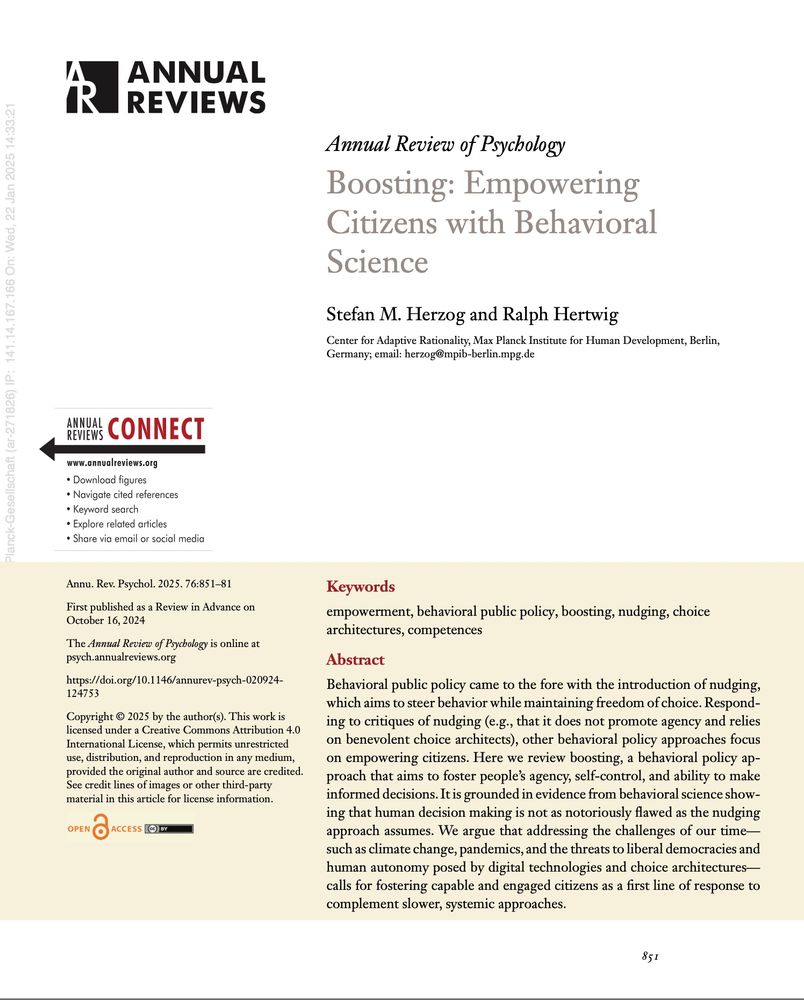
The image is the cover page of an article from the "Annual Review of Psychology" titled "Boosting: Empowering Citizens with Behavioral Science" by Stefan M. Herzog and Ralph Hertwig. It features a brief abstract, keywords, and publication details. The abstract outlines the concept of "boosting" as a behavioral public policy that emphasizes empowering individuals to make informed decisions, in contrast to "nudging," which subtly steers behavior. The abstract reads: Behavioral public policy came to the fore with the introduction of nudging, which aims to steer behavior while maintaining freedom of choice. Responding to critiques of nudging (e.g., that it does not promote agency and relies on benevolent choice architects), other behavioral policy approaches focus on empowering citizens. Here we review boosting, a behavioral policy approach that aims to foster people's agency, self-control, and ability to make informed decisions. It is grounded in evidence from behavioral science showing that human decision making is not as notoriously flawed as the nudging approach assumes. We argue that addressing the challenges of our time—such as climate change, pandemics, and the threats to liberal democracies and human autonomy posed by digital technologies and choice architectures—calls for fostering capable and engaged citizens as a first line of response to complement slower, systemic approaches.

List with summary points: 1. Behavioral public policy garnered widespread attention with the introduction of nudging, which aims to steer behavior while maintaining freedom of choice. 2. Criticisms of nudging include that it does not promote agency and competences and that it relies—overly optimistically—on the presence of benevolent choice architects. 3. The proliferation of environments threatening people's autonomy, the slow pace of systemic approaches to tackling societal issues, and the intrinsic benefits of empowerment make empowering citizens an indispensable objective of behavioral public policy. 4. Boosting is a behavioral public policy approach to empowerment grounded in evidence from behavioral science that shows that humans’ boundedly rational decision making is not as flawed as the nudging approach assumes. 5. Boosts are interventions that improve people's competencies to make informed choices that conform to their goals, preferences, and desires. 6. In self-nudging boosts, people learn to use architectural changes in their proximate choice environment to regulate their own behavior—that is, they are empowered to adapt their own choice environments. 7. There are boosts to foster core competences in many domains, including finance, online environments, and health, as well as broader, overarching areas, such as motivation, risk, and judgment and decision making. Boosts should be part of a policy mix that also includes system-level approaches. 8. When implementing boosts, policy makers need to avoid the trap of individualizing responsibility and to be mindful that, due to differences in cognition and motivation, inequalities in the desirable effects across boosted individuals may emerge.
🌟🧠💪📝
#BOOSTING: Empowering citizens with behavioral science
New, freely available paper in Annual Review of Psychology.
PDF: tinyurl.com/boosting2025
For more: scienceofboosting.org
@arc-mpib.bsky.social @mpib-berlin.bsky.social
@annualreviews.bsky.social
#policy #behavioralscience
1/ 🧵👇
New year, new research: In our latest paper published in JEP:LMC, my co-authors Thorsten Pachur, Wolfgang Gaissmaier and I answer the question: “Is there a description–experience gap in choices between a described and an experienced option?” (psycnet.apa.org/fulltext/202...)
08.01.2025 12:33 — 👍 3 🔁 2 💬 1 📌 0Cool post-doc with @janalasser.bsky.social : jobs.uni-graz.at/en/jobs/a122...
03.01.2025 17:52 — 👍 1 🔁 1 💬 0 📌 0I created this starter pack of researchers based in Europe who study misinformation, disinformation, and propaganda. I suspect this list will grow -- get in touch with suggestions go.bsky.app/36RdG8Z
16.11.2024 18:10 — 👍 175 🔁 82 💬 30 📌 11
academics from poorer backgrounds are:
-severely underrepresented
-more likely to not publish
-have outstanding publication records
-introduce more novel scientific concepts, but less likely to receive recognition, as measured by citations, Nobel Prize nominations & awards
www.nber.org/papers/w33289
We’re hiring a Team Lead at the GESIS Computational Social Science department 🌐
Passionate about open science & innovative methods for digital behavioral data? Join us to shape the future of CSS! 💻📊
❓ Questions? Contact me via DM or mail
👉 Job ad: www.hidden-professionals.de/HPv3.Jobs/ge...

Check out @fstock.bsky.social's new study--a cross-cultural study on preferences to control one's online environment!
18.12.2024 14:58 — 👍 1 🔁 0 💬 0 📌 0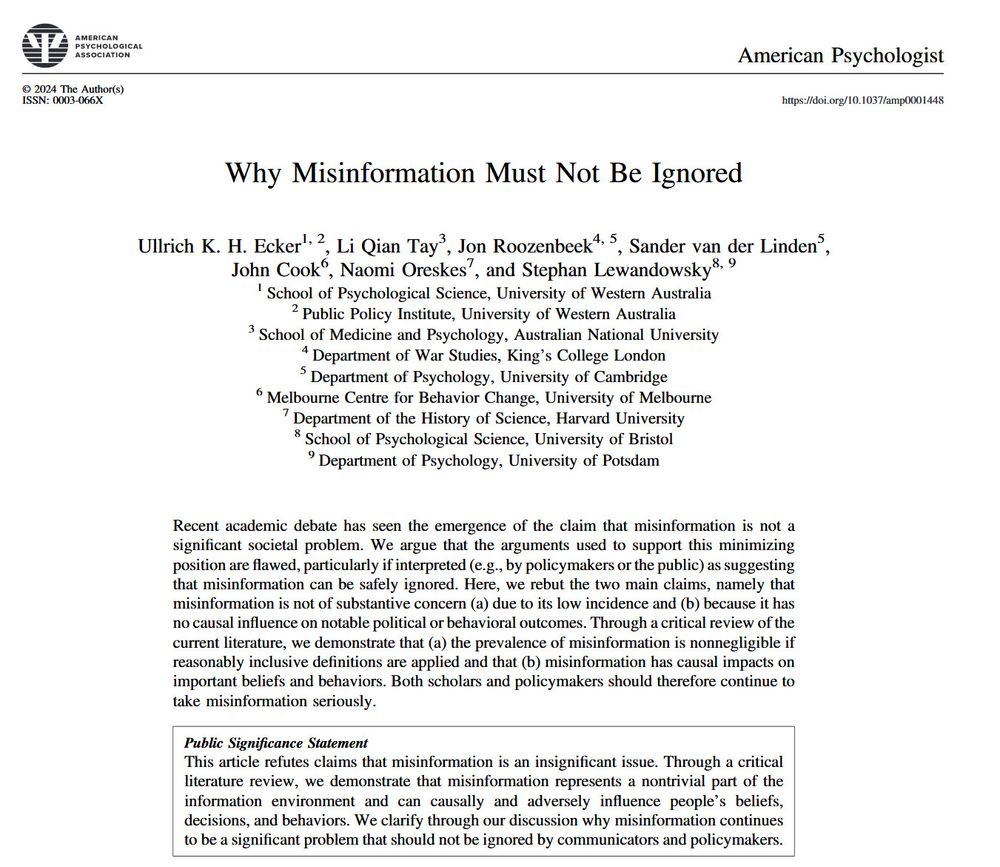
In this new article in American Psychologist we respond to critics in detail and clarify two key points for the field;
(1) The prevalence of misinformation in society is substantial when properly defined.
(2) Misinformation causally impacts attitudes and behaviors.
psycnet.apa.org/fulltext/202...

Job announcement: Junior Professorship in Computational Social Science at the University of Konstanz.
Join us at the Center for Data and Methods! Feel free to reach out if you have questions.
stellen.uni-konstanz.de/jobposting/2...
We asked people in 8 countries 🇦🇷🇧🇷🇩🇪🇯🇵🇪🇸🇰🇷🇬🇧🇺🇸 how they use platforms and their views on platform governance, privacy, & misinformation. We find overall platform ambivalence - people use platforms for news & info about politics, but they're also skeptical of the information they see there. 1/
05.12.2024 19:11 — 👍 57 🔁 28 💬 3 📌 2New study in PNAS reveals how age, analytical thinking, and political alignment shape susceptibility to online misinformation. Media literacy remains crucial in combating fake news.
#Misinformation #MediaLiteracy #Research #OnlineSafety #SocialPsychology
Very happy to share that our work is now published in PNAS! 🎉 It's a systematic look into how demographic and psychological factors are associated with misinformation susceptibility. @arc-mpib.bsky.social
Thread below and can be read in full here: www.pnas.org/doi/10.1073/...
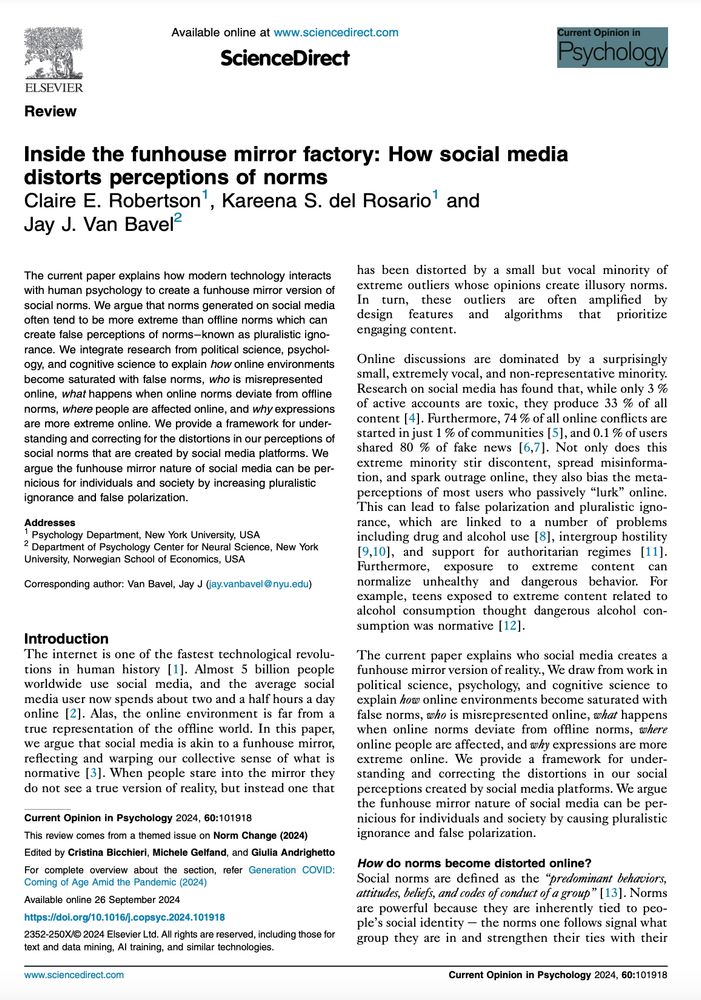
Our new paper takes you Inside the funhouse mirror factory and explains how social media distorts perceptions of norms
0.1 % of users share 80% of fake news!
A tiny proportion of bad actors cause most of the problems and distort the social norms.
sciencedirect.com/science/arti...

🚨Job Alert for Our Summer School🚨
Ein*e studentische*r Forschungsassistent*in wird für die Vorbereitung des jährlichen Summer Institutes im Juni 2025 gesucht. Angestrebter Beginn ist Februar 2025.
👇Weitere Informationen findet Ihr auf den folgenden Seiten.
www.mpib-berlin.mpg.de/1908772/2024...
This is a preprint, so any feedback and comments are welcome. This has been an effort to put together, so thanks are very much in order. Thanks to all my co-authors, and especially Ralf and @alantump.bsky.social :) 15/n
06.05.2024 15:04 — 👍 0 🔁 0 💬 0 📌 0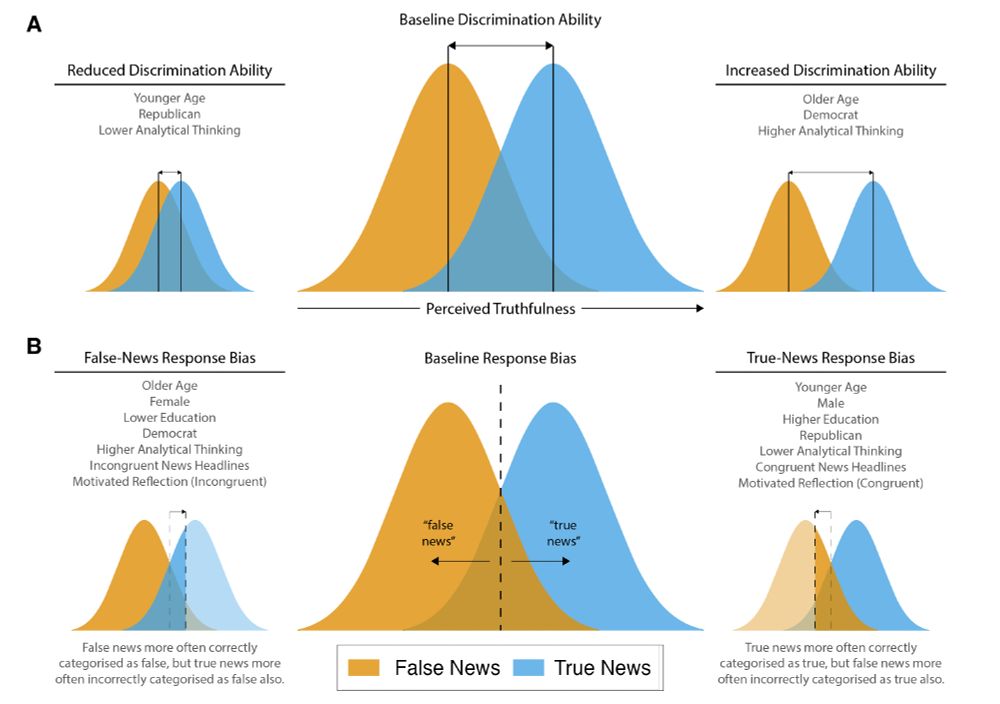
Here is an overview of the results. On top we have discrimination ability. For example, older adults have higher discrimination ability. On the bottom we have response bias, older adults have a false news bias, they tend to be more cautious. 14/n
06.05.2024 15:04 — 👍 1 🔁 0 💬 1 📌 0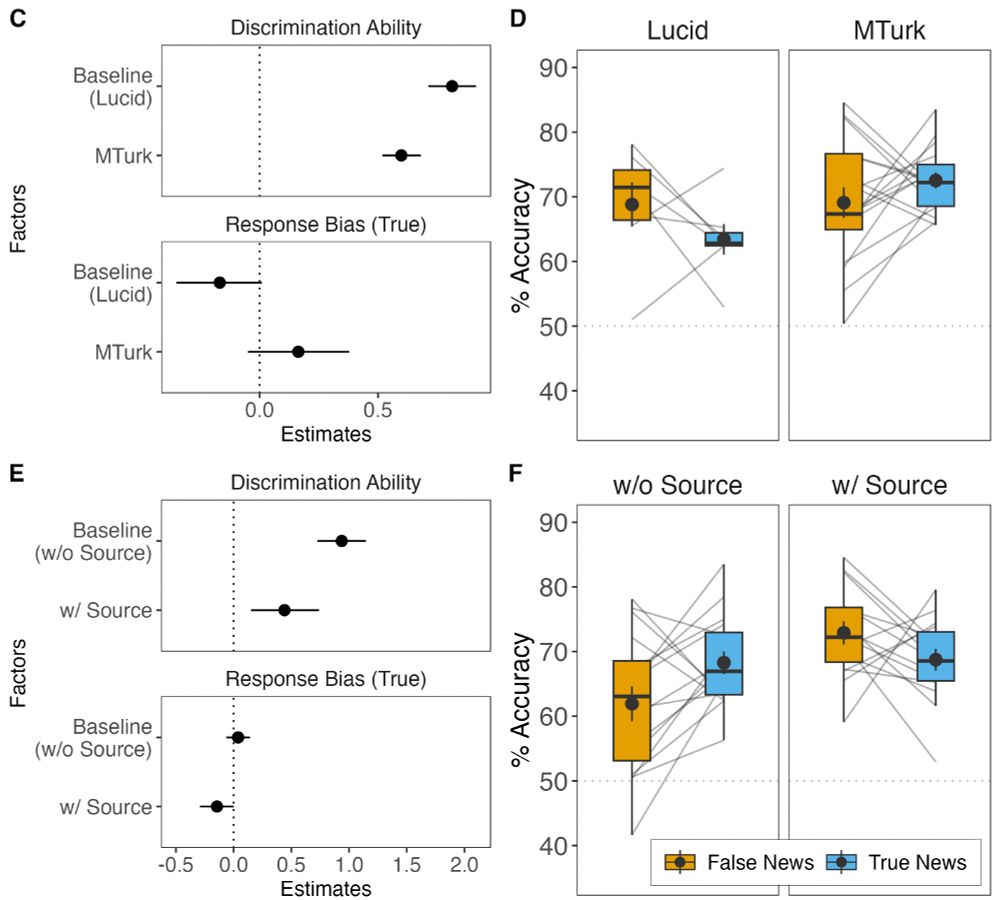
We also looked at some further meta-questions. Experiments on MTurk have better discrimination ability than on Lucid. And headlines displayed with a source lead to better discrimination ability. 13/n
06.05.2024 15:04 — 👍 0 🔁 0 💬 1 📌 0
Our biggest effect is familiarity. If you’ve seen a news headline before, you’re much more likely to treat it as true. 12/n
06.05.2024 15:04 — 👍 1 🔁 0 💬 1 📌 0
Partisan bias, aka ideological congruency, is a very reliable effect. People treat ingroup news to be true more often and disregard outgroup news as false more often. This again is worrying. The effect holds across partisan lines and is ready for interventions. 11/n
06.05.2024 15:04 — 👍 1 🔁 0 💬 1 📌 0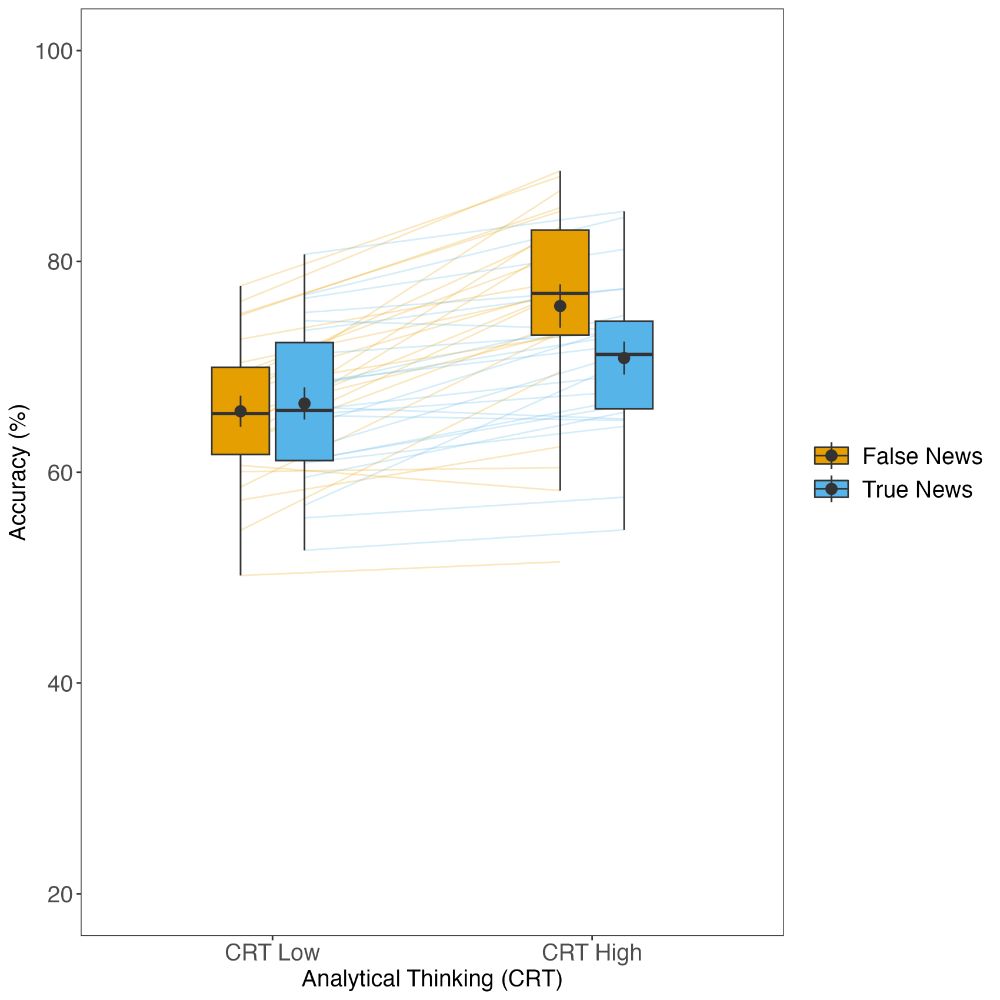
We find that analytical thinking (CRT) is reliably associated with higher discrimination ability and a false news bias (caution). It’s not yet fully clear what the CRT is measuring, unlocking this would help to build better interventions. 10/n
06.05.2024 15:03 — 👍 0 🔁 0 💬 1 📌 0
Confirming a worrying trend in other studies, we find that Democrats show a higher discrimination ability than Republicans, and a false-news bias (caution). Seen in light of polarisation, this hints towards Democrats and Republicans inhabiting different perceptions of truth. 9/n
06.05.2024 15:03 — 👍 1 🔁 0 💬 1 📌 0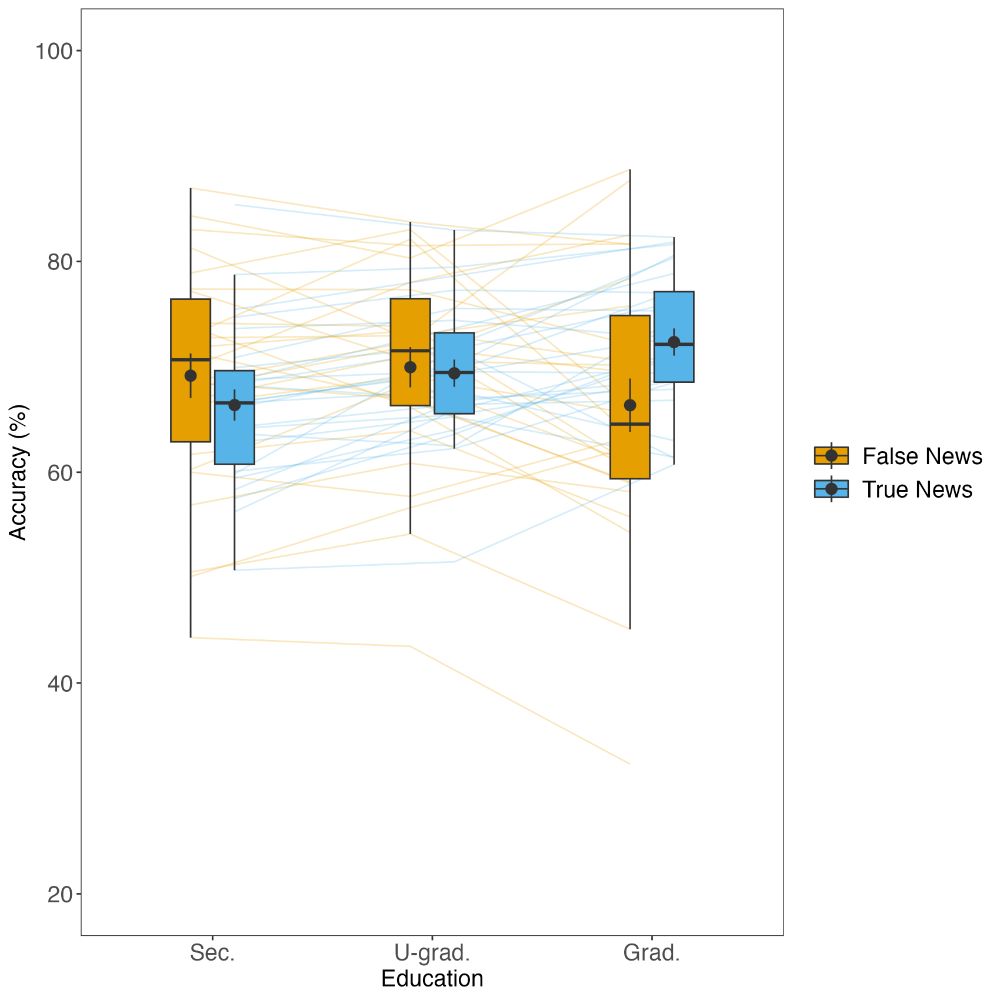
A null effect of education on discrimination ability. Higher education is also linked with treating news as true more often, a kind of naivety (a small effect). Resonates with research suggesting current educational practices need to better equip people for the digital world. 8/n
06.05.2024 15:03 — 👍 0 🔁 0 💬 1 📌 0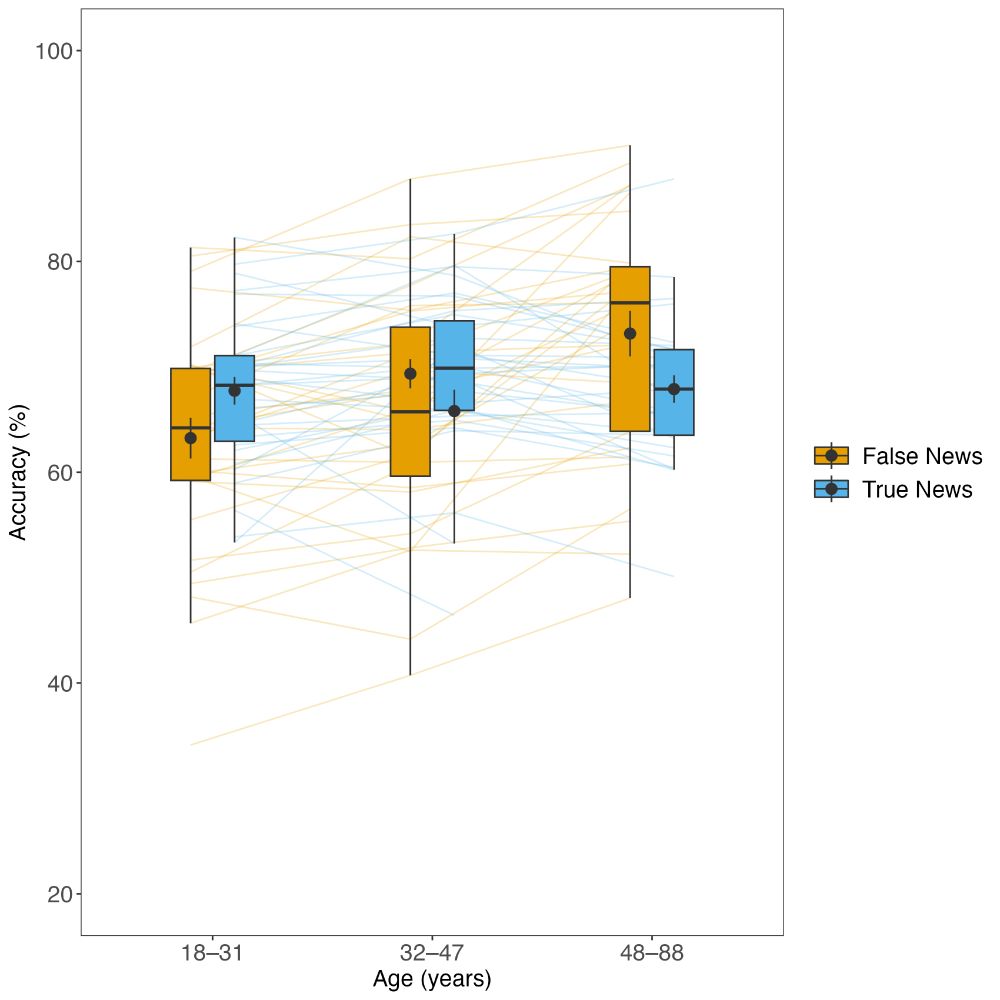
Older adults have a higher discrimination ability than younger adults and also a false news bias (they are more cautious). This is quite interesting, especially as older adults are known to share the most misinformation. (Note: each line is a study, split by true and false). 7/n
06.05.2024 15:02 — 👍 0 🔁 0 💬 1 📌 0
Here are the results at a glance: For discrimination ability, values greater than 0 indicate higher ability to discern between true and false news. For response bias, values greater than zero suggest a true-news bias, while values less than zero indicate a false-news bias. 6/n
06.05.2024 15:02 — 👍 0 🔁 0 💬 1 📌 0We use signal detection theory to disentangle discrimination ability: how well someone judges between true and false news. And response bias: whether one is biased towards generally treating news as true (true-new bias; naivety) or false more often (false-news bias; caution). 5/n
06.05.2024 15:02 — 👍 0 🔁 0 💬 1 📌 0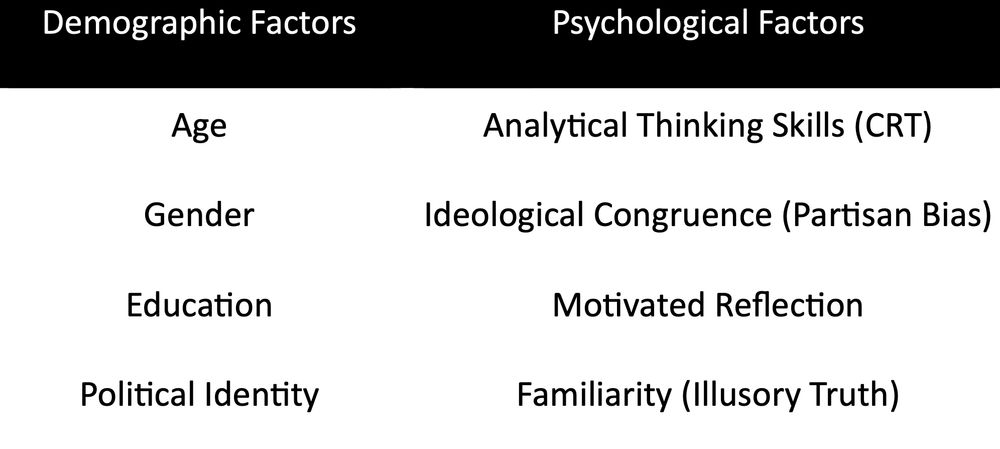
In our individual participant data meta-analysis, we pooled together 256,337 unique choices made by 11,561 participants across 31 experiments. This extensive dataset helped us assess how key demographic and psychological factors impact misinformation veracity judgements. 4/n
06.05.2024 15:01 — 👍 0 🔁 0 💬 1 📌 0